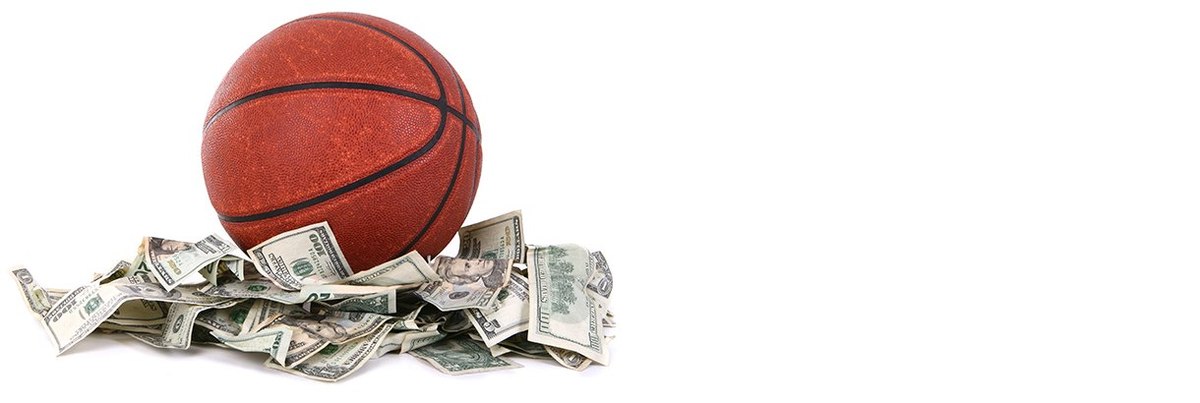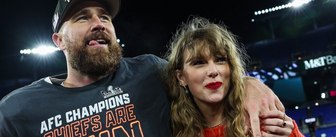Just over half don’t believe athletes need to attend college before going pro, either
Last month, various news sources reported that tickets for an NCAA Division I men’s basketball game between rivals the University of North Carolina Tar Heels and Duke Blue Devils were approaching Super Bowl levels. Average resale price: $3,296. In 2017, the NCAA earned a record-breaking $1.06 billion in revenue, as fans and critics alike continue to argue over the long-debated question of whether student-athletes should be compensated with more than just scholarships.
Now, as March Madness is set to tip off next week, new data from YouGov Plan & Track shows that a slight majority of all US adults appear to support the idea that student-athletes should receive some of that income. When shown the statement, “If college sports make so much money, it’s not right that college athletes don’t get paid,” 53% agreed, while 32% disagreed.
Fans of NCAA Division I men's basketball are especially convinced on the matter: 60% agree that it’s not right college athletes don’t get paid, while about half that amount (31%) disagree.
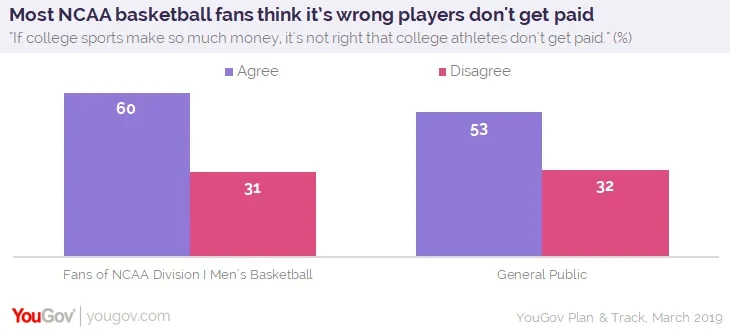
Recent reporting also suggests that the NBA is moving toward lowering the league’s minimum age requirement from 19 to 18, making more athletes eligible to enter the draft right out of high school instead of spending a year playing in college or abroad.
On this issue, YouGov data finds that just over half (54%) of NCAA Division I men's basketball fans don’t think athletes should be required to go to college before playing professionally. Overall, just under half (45%) of all US adults agree.
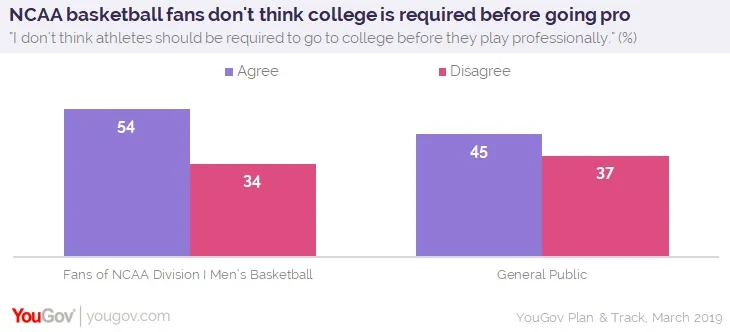
In total, nearly two-thirds of NCAA basketball fans (64%) and American consumers in general (64%) think it's not acceptable for college athletes to lose their scholarships if they get hurt and can no longer compete.
When it comes to major NCAA corporate sponsors — AT&T, Capital One, and Coca-Cola — additional numbers reveal that fans of NCAA Division I men's basketball are slightly more likely to have a better overall impression of each brand than US shoppers on average.
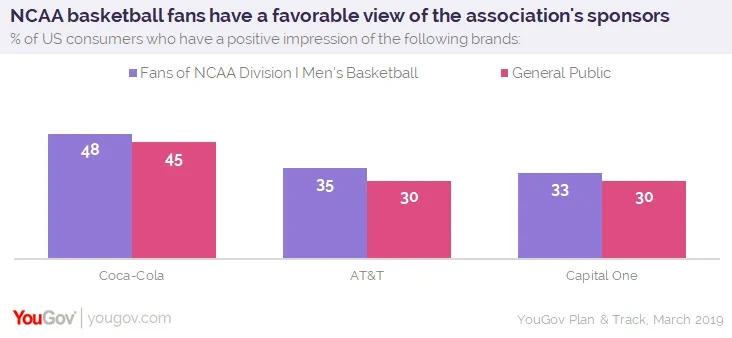
Photo: Getty
